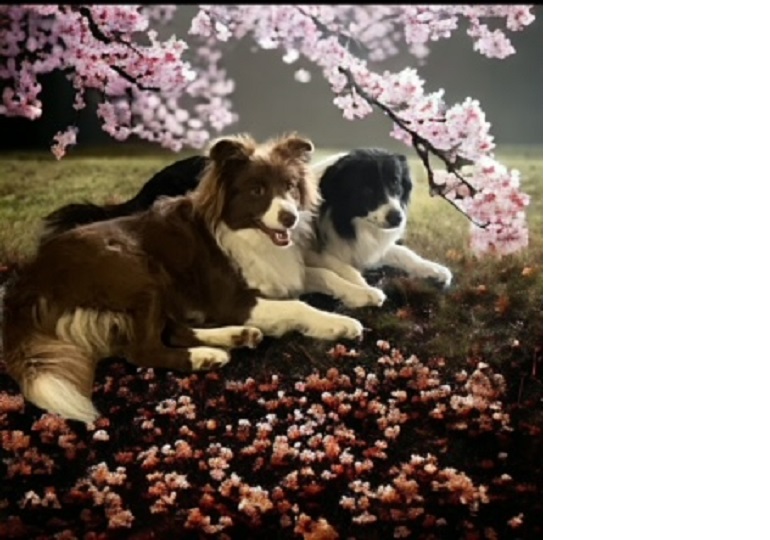
GROUP 5 - WORKING DOGS
The Border Collie originated in Scotland and can be traced back for 350 years. The name is derived from the area of its origin – the border of Scotland and England. It was introduced into northern England during the great droving days of the 18th century; it was here that one of the foundation stud dogs, ‘Old Hemp’, was whelped. It was fi rst imported into Australia in 1901 and recognised as an Australian Working Dog breed in 1953. Although it isn’t an Australian Breed, its contribution to the Australian sheep industry and unique Australian heritage has led Borders to receive a form of breed nationalisation. Australia is also regarded as the Country of Development for the Border Collie in the conformation ring.
Borders have all the characteristics of a working dog: it is an intelligent, athletic, faithful dog with an inherent desire to please. Borders are agile, active dogs and while it is a breed capable of covering the ground at great speed and executing sudden, sharp turns, it can also display great patience and control, often characterised by the famous Border Collie ‘creep’ and the motionless stance whilst giving stock the ‘eye’.
Borders are moderately sized with males 48-53cm at the shoulders and females 46-51cm. Accepted colours are Black/White, Blue/White, Chocolate/White, Red/White, Tri-colour Black/Tan/White and Blue Merle, but many more colours and coat patterns are possible. The standard does not dictate particular placement for markings but states “white must not predominate”, so any dog that is less than 50% white is correct.
Border Collies are generally very fi t, active dogs, with an average life expectancy of 12-15 years. Hereditary diseases aff ecting Borders include Ceriod Lipofuscinosis (CL), Trapped Neutrophil Syndrome (TNS) and Collie Eye Anomaly (CEA). Through many years of fundraising and sample collection, breeders have enabled the development of DNA testing for these conditions.
Reputable breeders now routinely DNA test all breeding stock. Breeders also x-ray and grade hips and elbows of all breeding stock to make sure that HD and OCD never become anything more than a rare problem in the breed. Breeders around the world are also currently investigating recent cases of glaucoma and epilepsy in a bid to develop a screening test and reduce incidences.
Most of today’s Borders don’t work so their energy and intelligence is channeled into activities including Obedience, Agility, Tracking and showing. Being very intelligent, Borders are easily trained; however, this breed also needs a structured and disciplined environment. Catering for mental energy is just as important as physical exercise. Borders need an active owner who is willing to involve the dog in all family activities in addition to some socialisation and formal training.
Border Collies have a moderately long, medium-textured topcoat and a short dense undercoat, which provides good insulation and weather protection. Generally, the coat is not subject to matting and tangling although this can occur during a coat drop if the dead hair is not removed.
Information from The Border Collie Club of NSW
Image: Border Pix N Art Photography
Now you know a little about the Border Collie you may have think that this is the dog for you. Before you make a decision, please make contact with the breed club or your State controlling body for purebred dogs. They will be able to give you information about available puppies and also suggest dog shows where you can see the breed and speak to breeders. In this way you will gain a better perspective of the Border Collie and its needs and whether this breed would suit your lifestyle.











